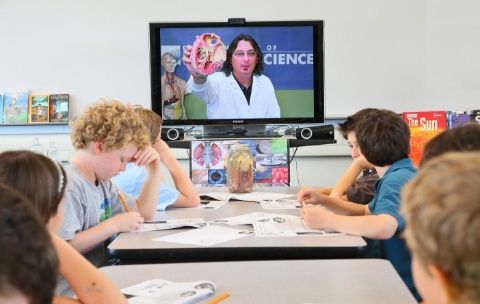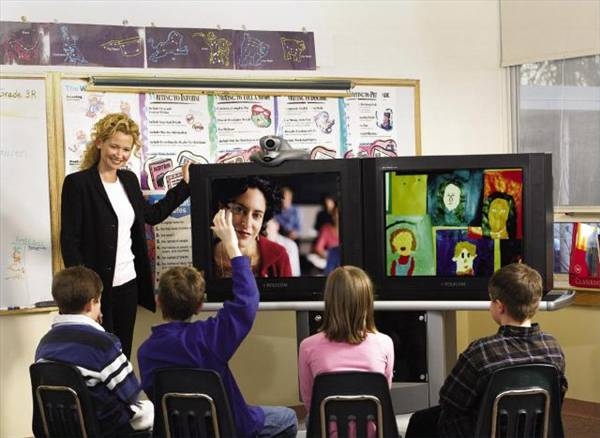Top 6 Ways to Use Video Conferencing in the Classroom
In the old days,students have to sit in the same classroom in order to get education. However,with the development of science and technology,students from across the world can study together with the powerful video conferencing program regardless of time and location.
Many of us are familiar with the use of computers,iPads,Smart Boards,and other technological tools in today’s classrooms. One relatively untapped tool for our classrooms is video conferencing. There are so many exciting possibilities that come with being able to see,hear,and communicate with people all over the world from the comfort of your classroom (or wherever you are learning).
Using video conferencing in the classroom as a teaching tool is something relatively new for a lot of educators. Many people think video conferencing is very expensive or to difficult to work that they don’t even consider it. The truth is its neither of these things. Video conferencing is affordable and setting it up is not very difficult at all. In fact changes are if are an institution of higher learning that offers Email to your students,then you may already have it.
The ways that video conferencing can enhance the educational experience are numerous. Ginger Lewman,director of the Face2Face program at the Turning Point Learning Center in Emporia,Kansas said that video conferencing has been used “as an essential learning opportunity for the past four years. We’ve been connecting with students across the U.S. and the work to bring religion,geography,history and service learning to vibrant life.”
But how exactly do you use a video conferencing system in education? Below are six ways to use video conferencing in the classroom:
1. Virtual Field Trips
Fieldtrips are always exciting and fun ways to get students more engaged in learning. Unfortunately due to budget,transportation,and timely preparation issues limit the number of field trips students get to experience. With video conferencing technology in the classroom all these problems are solved. Students can go to a zoo in china and talk with astronauts as they give them a tour of NASA. Video conferencing systems in classroom technology allow students to travel all over the world and make learning to come alive.

2. Connect with Experts and Specialists
School teachers like to invite special guest speakers into the classroom to more readily engage children and provide another level of insight into the topic being studied. Unfortunately,the traditional method of acquiring a guest speaker is often a painstaking process; it can be difficult to find the specific speaker needed within a certain mile radius,and it can be especially difficult to find a speaker with an open schedule for traveling time.
Schools that incorporate video calls as a learning tool give children the opportunity to hear from a slew of informative and engaging specialists in the area of interest,while simultaneously cutting back on teacher and speaker hassle.

3. Classroom collaboration
Collaborative learning activities for students are no longer limited to a single classroom or school. With video conferencing technology students can work with students across not only the United States but the world. Students can have access to fresh ideas,new thought and opinions,different cultures,and new people miles away to enrich learning and make them more well-rounded individuals.
4. Accessing Previously Unavailable Courses
Some schools,especially those in rural areas,aren’t able to offer advanced or detailed courses that their students might need. Even those in more populated areas often lack enough teachers in certain subject areas. Many schools could benefit from having an extra course over distance learning that they might not be able to offer otherwise. Instead of having to commute long distances between different schools,teachers would be able to instruct over video conferencing.
What’s more,“previously unavailable courses” can mean some pretty exotic content. You might have dissected squids or made model skeletons,but how many times have you seen a live knee replacement surgery in science class? At COSI (Center of Science and Industry) in Columbus,Ohio,showing live knee replacement surgeries over video conferencing is nothing new.
Video conferencing is a powerful medium for giving students unparalleled access to places (or procedures) they could have only dreamed of in the past.

5. Teacher Benefits
Many people don’t realize the endless possibilities available to teachers when video conference methods are introduced into the classroom. The use of video in the classroom is obviously a teaching aid,but many video calls provide a way for teachers to exchange information with other teachers and administrators with ease and efficiency. Teachers can even conduct parent teacher conferences via video calls,thus avoiding the inconvenience experienced by both teacher and parent during the orchestration of in-school meetings.
Most importantly,meetings can be conducted without losing the important non-verbal cues that are so imperative to face-to-face communication. Teachers can enjoy triple the flexibility without sacrificing quality communication.
6. Increasing Social Presence in the Digital Classroom
One of the shortcomings of today’s online and hybrid classrooms is limited opportunity for social engagement. Social learning is an engaging,productive part of effective learning,and teachers working online would be well advised to make opportunities to incorporate it into their course work.
When online teachers and students get digitally get together via the face-to-face medium of video conferencing (especially solutions that allow many participants to be viewed together at once),they recreate significant elements of the physical social gathering.